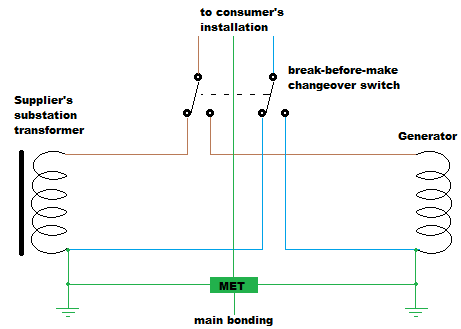Hi All,
We've just installed a 400A manual changeover switch for a client that requires a backup generator (Not permanently installed - as It's being supplied by a generator hire company as and when there are power outages) It's a semi rural location and they seem to get power cuts several times a year.
The generator company aren't being particularly forthcoming with information regarding the sets they will be supplying (Other than saying they all have in built earth fault Leakage protection)
The existing supply is TNCS & I know we can't rely on the DNO earthing during a power cut. With this in mind and little more information to go on from the generator company, Should we be installing a Rod(s) and just ensuring we have a resistance lower than 20 Ohms. Is there anything else I need to consider, Obviously my concern is ensuring that any existing protective devices will still operate under fault conditions whilst supplied by the generator.
Given that 411.4.2 now recommends an electrode at the point of supply, I assume we have no real issue with a combined TT / TNCS arrangement!
All thoughts are more than welcome,
Thanks,
Tim



